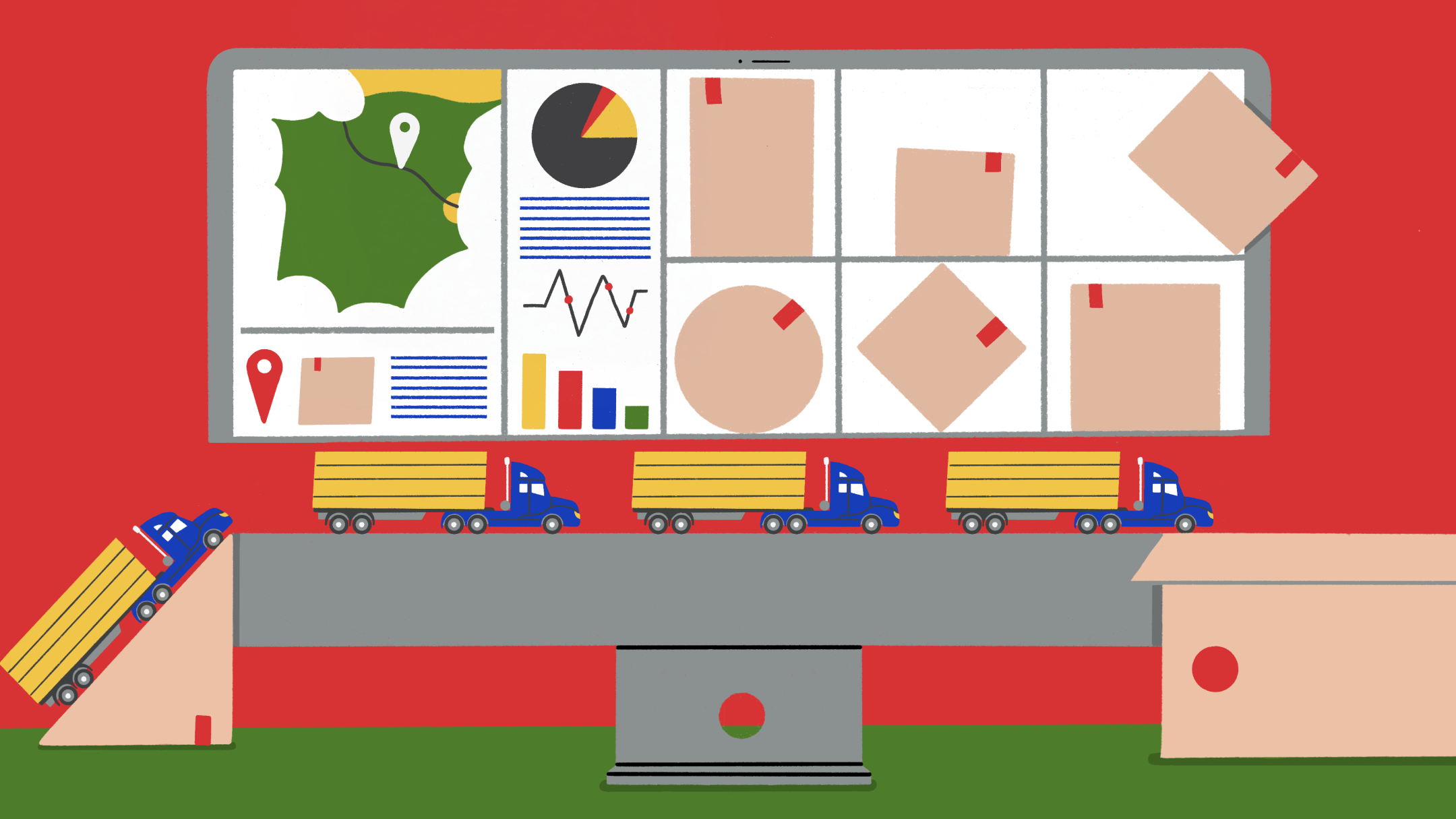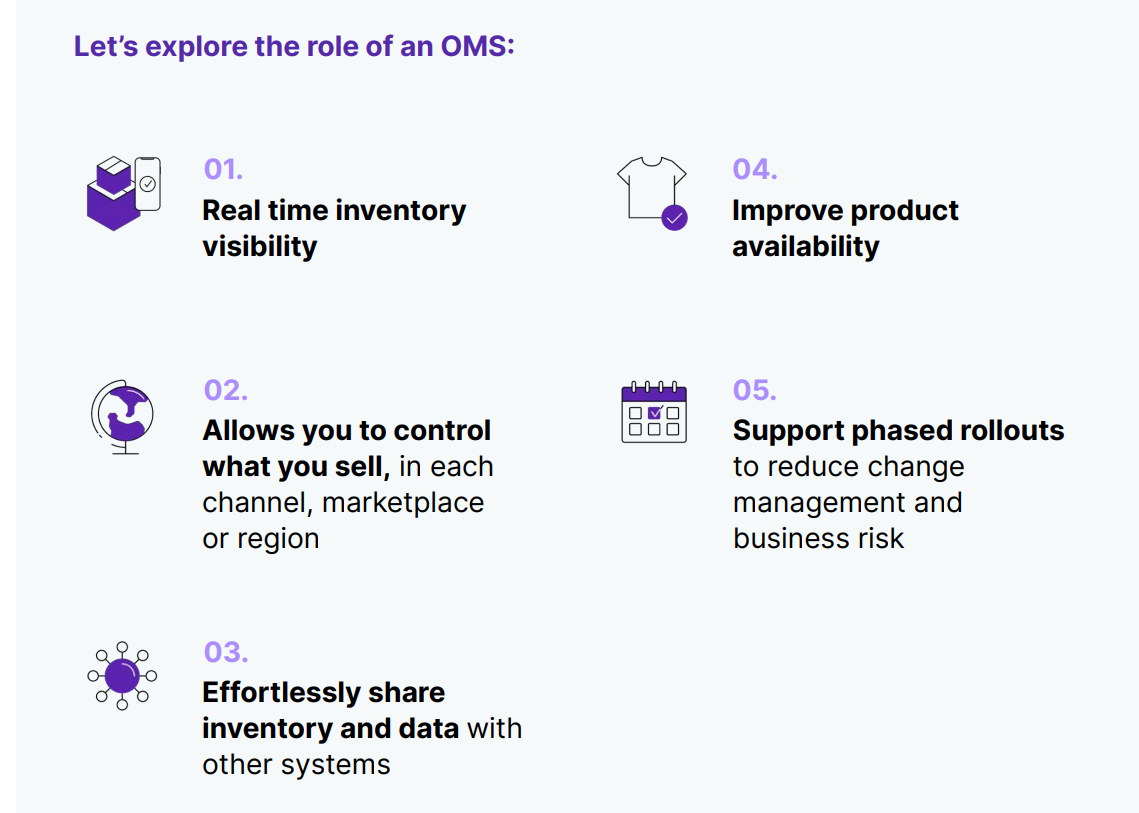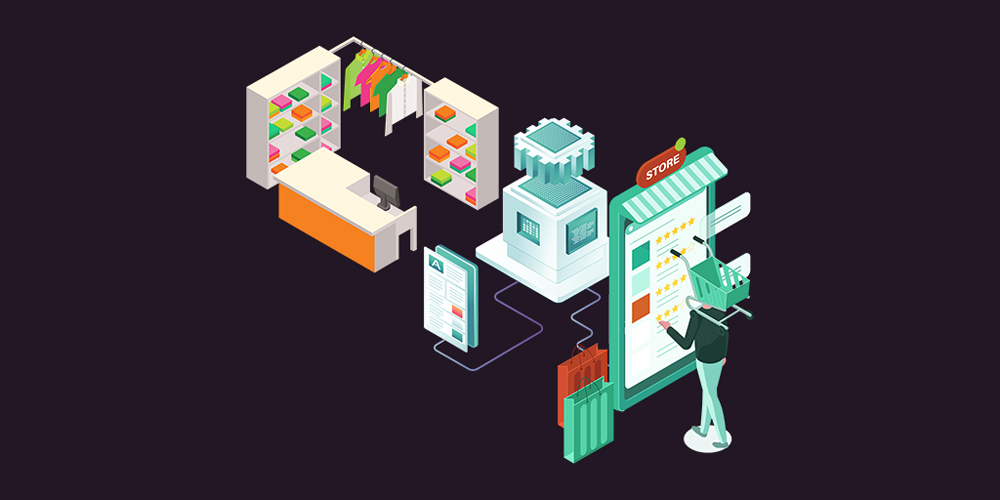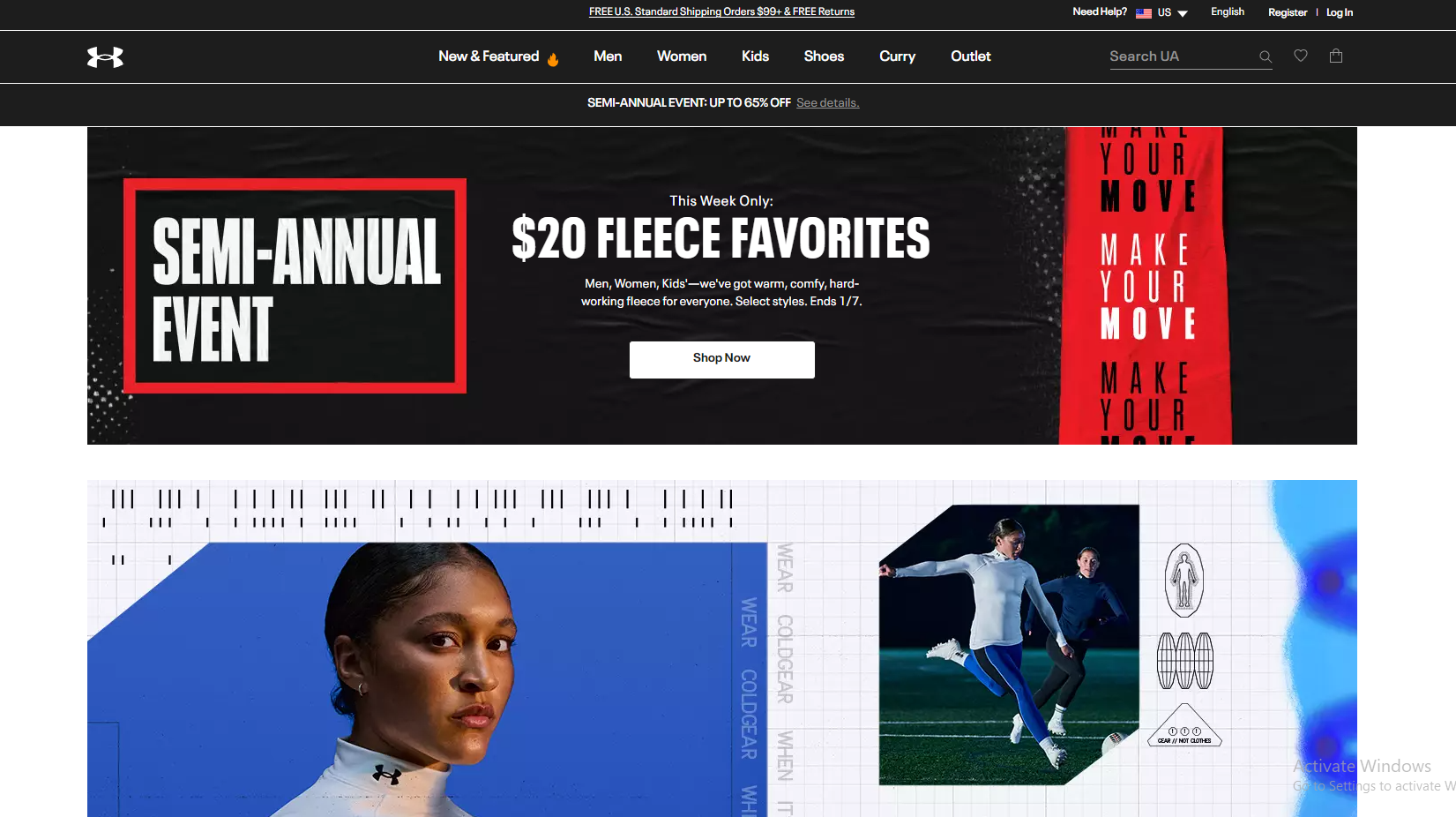In the digital age, headless commerce is revolutionizing eCommerce by separating front-end presentation from back-end data functionality, providing unparalleled flexibility and user experience customization. Central to this paradigm is the Order Management System (OMS), ensuring agile and cohesive operations. This blog looks into the essentials of headless commerce OMS, contrasts it with traditional systems, and examines its vital role and benefits, supported by best practices and real-world case studies.
Table of Contents
Understanding Headless Commerce Order Management
Headless Commerce Order Management System (OMS) is an essential tool in eCommerce that serves as the central hub for managing and streamlining order-related workflows. It plays a critical role in inventory management, ensuring real-time updates of stock levels as orders are received. By consolidating order data from various sales channels like marketplaces and eCommerce platforms, an OMS provides a comprehensive view of sales activities. Additionally, it often overlaps with shipping and fulfillment services, integrating various aspects of the order process from receipt to delivery.
Key Components of Headless Order Management
The key components of a headless Order Management System (OMS) are critical in facilitating its flexibility and efficiency.

- APIs and Microservices: APIs (Application Programming Interfaces) are fundamental in a headless OMS. They allow seamless communication between different software applications and enable the OMS to interact with various external systems and services. Microservices architecture, where different functionalities are broken down into smaller, independent services, enhances the agility and scalability of the OMS. This modularity allows for easier updates and maintenance, and better handling of complex, distributed processes.
- Front-end Separation: In headless commerce, the front end (user interface) is decoupled from the back end (server-side) systems like the OMS. This separation means that the user experience can be designed and updated without affecting the back-end processes. It allows for greater flexibility in designing customer interactions across different platforms (web, mobile, etc.) and tailoring user experiences to specific market segments.
- Inventory Management Integration: Effective inventory management is key to the success of any commerce operation. Integrating the OMS with inventory management systems ensures that inventory data is accurate and up-to-date. This integration facilitates real-time tracking of stock levels, reducing the risk of overselling, and helping maintain optimal inventory levels across various sales channels.
- Payment and Shipping Services Integration: Integrating payment gateways and shipping services directly with the OMS streamlines the checkout and fulfillment processes. This integration allows for a smoother transaction process for customers, from payment processing to order shipment. It also enables the business to manage and track these processes more efficiently, ensuring better customer service and operational effectiveness.
How Headless Commerce Facilitates Order Management
Headless commerce revolutionizes order management through its distinctive architectural approach where the front-end user interface is distinct and separate from the back end, which handles server-side logic and data management. This separation is instrumental in facilitating seamless integration with multiple systems, as the back end can easily connect with various components such as inventory management, payment gateways, and shipping services through APIs (Application Programming Interfaces).
Such integration ensures that all aspects of order management, from the initial placing of an order to its fulfillment, operate in a synchronized and efficient manner. The agility and flexibility provided by this decoupling are also significant; changes or updates to the front end do not disrupt back end processes, allowing businesses to rapidly adapt to market trends or customer needs without affecting the stability and reliability of the core order management system. This ability to quickly implement front end innovations while maintaining uninterrupted order processing is a key advantage of headless commerce.

Furthermore, headless commerce significantly enhances the customer experience. Since the front end is independent, it can be customized to offer a unique and engaging user interface, directly impacting the ease and efficiency of the order placement process and leading to improved customer satisfaction and loyalty. The API-driven nature of headless commerce also ensures real-time data processing, which is crucial in order management for maintaining up-to-date inventory levels, order statuses, and customer information, thereby avoiding issues like overselling.
Additionally, the scalability and performance of headless systems are inherent benefits. As businesses grow and experience increased order volumes, the back end of a headless commerce system can be scaled independently of the front end. This scalability ensures that the order management system can handle higher loads without compromising on performance, making it an ideal solution for businesses aiming to expand their reach or product offerings.
In summary, headless commerce facilitates order management by offering a more flexible, integrated, and customer-centric approach, enabling businesses to adapt quickly and manage orders efficiently.
Advantages of Headless Order Management System vs Traditional Commerce OMS
Headless Order Management Systems (OMS) offer several advantages over traditional commerce OMS, reflecting the evolving needs of modern eCommerce:
- Streamlined Order Processing: Headless OMS provides a more streamlined and efficient order processing experience compared to traditional systems. With APIs and microservices architecture, it can quickly adapt to changes and integrate with various sales channels and fulfillment partners. This agility reduces processing times and improves operational efficiency.
- Personalized Customer Experience: Unlike traditional OMS, which often have rigid front-end interfaces, headless OMS allows for complete customization of the customer interface. This flexibility enables businesses to create highly personalized and dynamic user experiences, tailored to individual customer preferences and behaviors, across different platforms and devices.
- Improved Inventory Management: Headless OMS typically offers better integration with inventory management systems. This integration allows for real-time tracking and updating of inventory across multiple sales channels, reducing the likelihood of overselling and stock shortages. This is a significant improvement over traditional OMS, which may not update inventory as promptly or accurately.
- Efficient Returns and Refunds Handling: The flexibility of headless OMS also extends to handling returns and refunds. Its ability to integrate seamlessly with various systems streamlines the returns process, making it more efficient and customer-friendly. This efficiency is often lacking in traditional systems, where the returns process can be cumbersome and disconnected from other operations.
- Enhanced Analytics and Reporting: Headless OMS typically offer superior analytics and reporting capabilities compared to traditional systems. The separation of the front end and back end allows for the collection of more detailed data about customer interactions and order processing. This rich data can be leveraged for insightful analytics, helping businesses make more informed decisions and continually optimize their operations and customer experiences.
The Role of Order Management in Headless Commerce
An Order Management System (OMS) is indispensable in the architecture of headless commerce, acting as the central cog in the machinery of modern eCommerce operations. Its significance stretches far beyond the finalization of a purchase, embedding itself as a crucial element throughout the entire sales cycle.
At the core of its functionality, an OMS offers real-time inventory visibility, which is more than just a tracking tool; it’s the strategic linchpin that ensures customers see accurate stock levels across all platforms. This component is particularly vital in today’s diversified retail environment, where customers expect instant gratification and businesses must deliver without fail.
The OMS maintains a delicate balance, keeping stock levels in check across various regions and channels. Whether it’s an in-store kiosk or an online marketplace, the OMS is the guardian of inventory, ensuring that businesses can make confident promises to their customers about product availability.

The control an OMS provides is not limited to inventory alone. It also allows businesses to exert nuanced control over what they sell, and where they sell it, adapting to regional preferences and market demands. This control is essential for tailoring offerings to different segments, optimizing the sales mix across brands, and ensuring that the right products are available in the right channels. In an age where consumer preferences shift rapidly and supply chains are increasingly complex, the agility afforded by an OMS to adapt strategy in real-time is a competitive edge businesses cannot afford to overlook.
Moreover, an OMS facilitates the effortless sharing of inventory and data with other systems, which is a cornerstone of headless commerce. It acts as the conduit through which information flows, from the Point of Sale systems to ERP solutions, to Drop Ship Vendors and beyond. This seamless data interchange is what enables a headless commerce operation to function without friction, ensuring that all parts of the organization are operating with the same, up-to-date information.
Improving product availability is yet another area where an OMS shows its mettle. By offering a transparent view of stock, supporting the acceptance of backorders and pre-orders, and showing local inventory availability, an OMS can improve product availability. This directly influences the ability of a business to secure sales, satisfy customer demands, and even optimize inventory sourcing, which can lead to better margins and customer loyalty.
Lastly, the OMS’s role in supporting phased rollouts cannot be understated. Implementing an OMS is not a trivial endeavor, and the phased approach it supports is critical for businesses that need to adapt quickly to changing consumer behaviors and emerging market requirements. By prioritizing inventory visibility and order orchestration, and then gradually expanding to include other functionalities, businesses can ensure a smooth transition to a headless commerce model.
Benefits of Implementing Headless Commerce Order Management
Implementing headless commerce in Order Management Systems (OMS) offers substantial benefits that are particularly suited to the dynamic and evolving landscape of modern eCommerce.
Flexibility and Scalability
One of the most significant advantages is the flexibility and scalability it provides. In a headless setup, the front-end user interface is decoupled from the back-end processing systems. This architecture allows businesses to update or revamp their customer-facing platforms without necessitating a complete overhaul of their back-end systems. The modular design, characterized by the use of microservices and APIs, enables businesses to scale up or add new functionalities with ease and minimal disruption. This flexibility is crucial for businesses looking to stay agile and responsive to market trends and consumer demands.
Omnichannel Support
Another key benefit of headless commerce OMS is its robust support for omnichannel strategies. In today’s retail environment, providing a seamless and consistent customer experience across various channels, including online, mobile, in-store, and social media, is essential. Headless commerce centralizes order management and maintains consistent data across all these channels, ensuring that customers enjoy a unified shopping experience. This omnichannel support is vital in building and maintaining strong customer relationships and brand loyalty.
Real-time Inventory Management
This is another area where headless commerce OMS excels. By enabling seamless integration across various platforms, a headless OMS can synchronize inventory levels in real time across multiple sales channels. This synchronization is critical in preventing issues like overselling or stock shortages, ensuring that inventory levels are always accurate and up-to-date. In the fast-paced world of eCommerce, this real-time visibility is indispensable for maintaining operational efficiency and high levels of customer satisfaction.
Enhanced Customer Experience
Moreover, headless commerce significantly enhances the customer experience. The separation of the front end from the back end opens up opportunities for creating unique, personalized interfaces and customer interactions. Businesses can design innovative, user-centric interfaces that cater specifically to their audience’s preferences. This level of customization leads to improved customer engagement and loyalty, as businesses can quickly adapt their online presence to align with changing customer expectations and emerging trends.
How Headless Commerce Facilitates Order Management
Challenges and Considerations
While headless commerce offers numerous advantages for order management, it also comes with certain challenges and considerations that businesses need to be mindful of.

- Integration Complexity: One of the key challenges in implementing a headless commerce system is the complexity of integration. Since headless commerce relies heavily on APIs and microservices, integrating various systems and ensuring they work cohesively can be a complex task. This complexity is especially pronounced when dealing with legacy systems or when integrating multiple third-party services. Businesses need to invest time and resources in ensuring that these integrations are seamless and do not disrupt existing operations.
- Data Security: In a headless commerce environment, data security becomes a crucial consideration due to the decentralized nature of data handling and storage. With multiple systems interacting through APIs, there is an increased risk of data breaches and security vulnerabilities. Businesses must implement robust security measures, including secure API gateways and data encryption, to protect sensitive customer and business data. Compliance with data protection regulations, like GDPR, also becomes more challenging and important in such a setup.
- Cost Considerations: Transitioning to a headless commerce model can involve significant upfront costs. These costs include investments in technology infrastructure, software development, and integration of various systems. Additionally, ongoing maintenance and updates to the system can also contribute to higher operational costs. Businesses need to carefully evaluate the return on investment and consider whether the long-term benefits of a headless commerce system justify these initial and ongoing expenses.
- Training and Adoption: Implementing a new system like headless commerce often requires a cultural shift within the organization. Employees, especially those in IT and marketing departments, may need training to adapt to the new technology. Ensuring a smooth transition involves not only technical training but also fostering an understanding of how headless commerce changes workflows and business processes. Resistance to change is a common challenge, and businesses must manage the change effectively to ensure successful adoption.
Best Practices for Effective Headless Order Management
To optimize the performance of a headless Order Management System (OMS) and ensure it drives value for a business, certain best practices should be embraced:
- Streamlining Order Processing Workflows: The efficiency of an OMS hinges on streamlined workflows. This means designing a process that is as lean and efficient as possible. By removing unnecessary steps and ensuring that every part of the order processing procedure from initiation to fulfillment is optimized for speed and accuracy, businesses can significantly improve their operational efficiency. Streamlining workflows involves mapping out every step in the order journey, identifying bottlenecks, and utilizing technology to simplify and accelerate these processes. This not only speeds up order processing but also enhances the customer’s experience by reducing the time between order placement and fulfillment.
- Automation and Artificial Intelligence: Leveraging automation and AI can transform a headless OMS from a passive to a proactive system. Automation can take over routine tasks such as updating inventory levels, processing orders, and managing customer data, freeing up human resources for more complex, value-added activities. AI, on the other hand, can bring a level of predictive analysis to the OMS, such as forecasting demand to ensure optimal stock levels or personalizing the shopping experience for customers based on their behavior and preferences. By embedding AI into the OMS, businesses can anticipate customer needs and make smarter business decisions.
- Customer Communication and Notifications: In a headless commerce environment, communication with customers is key. Effective OMS should automatically send updates and notifications to customers at every key stage of the order process, from confirmation to shipment to delivery. This communication should be timely, accurate, and in the customer’s preferred format, whether that be email, SMS, or through an app. Proactive communication can reduce customer service inquiries, build trust, and improve the overall customer experience.
- Regular Data Analysis and Optimization: A headless OMS is a treasure trove of data, and regular analysis of this data is essential. By constantly reviewing performance metrics, customer feedback, and inventory levels, businesses can gain insights into what is working well and what needs improvement. Data analysis can help optimize the supply chain, improve product recommendations, and even drive strategic business decisions. Continuous optimization based on data analysis ensures that the OMS and the overall business remain agile and responsive to the ever-changing eCommerce landscape.
Real-world Examples of Headless Commerce Order Management System
Under Armour
Under Armour has strategically implemented a headless commerce Order Management System (OMS) to revolutionize its customer experience. By adopting this approach, the brand has successfully integrated transactional shopping with personalized content delivery, creating a seamless user journey. The system draws on a wealth of data, including user traffic patterns, payment histories, and workout logs, to tailor the shopping experience.
This integration ensures that each customer interaction is informed by their unique preferences, activities, and purchasing history. For example, when customers engage with the Under Armour platform, they are met with product recommendations and fitness content that are aligned with their location, past purchases, and recorded fitness activities, crafting a highly personalized experience.

This level of personalization has allowed Under Armour to not only enhance the shopping experience but also deepen the connection between the brand and its customers. By utilizing workout data, the OMS is able to suggest relevant products and content that resonate with the customer’s fitness journey.
Such targeted interactions elevate the customer’s experience beyond a simple transaction, fostering loyalty and encouraging continuous engagement with the brand. This use of headless commerce is a prime example of how the separation of front-end presentation from back-end data processing can lead to a more dynamic, responsive, and customer-centric retail environment.
Zara
Zara, an iconic player in the fast-fashion industry, has embraced a headless commerce Order Management System (OMS) to keep pace with the swift changes that define the fashion world. By adopting this flexible architecture, Zara has empowered itself to introduce innovations on its digital platforms at breakneck speeds, seamlessly integrating the latest trends into its product lineup.
The headless commerce approach streamlines the shopping experience, allowing Zara to launch new offerings with minimal delay, thus ensuring that the brand stays relevant and resonant with its fashion-forward customer base. This agility in content delivery and product management is not only a response to consumer demand but also a proactive move to shape the market.
The implementation of headless commerce has provided Zara with a robust framework to improve customer interactions both online and in physical stores, leading to enhanced customer satisfaction and retention. This strategic technology shift allows for continuous updates and customization of customer experiences without the need to restructure the entire system, thereby fostering a dynamic retail environment that keeps customers engaged.
With this level of adaptability, Zara has set itself apart, demonstrating how a headless OMS can be a catalyst for digital transformation, driving customer loyalty and setting new standards in the competitive landscape of fast fashion.
Starbucks: Crafting Customized Experiences
Starbucks, the coffeehouse giant, has effectively utilized a headless commerce Order Management System (OMS) to craft a personalized digital experience that resonates with its global customer base. The brand has harnessed this technology to refine its ordering process, allowing for the precise presentation of localized inventory, tailored promotions, and accurate pricing.
This synchronization across multiple customer touchpoints — from their website to mobile apps to in-store digital screens — ensures that customers receive a consistent and customized experience regardless of how they choose to interact with Starbucks. Such an approach not only streamlines operations but also significantly enhances the customer journey, leading to improved satisfaction.

The integration of a headless commerce OMS has been pivotal in enabling Starbucks to deepen its customer relationships and bolster brand loyalty. By delivering a personalized service that remembers individual preferences and suggests relevant new offerings, Starbucks reinforces its image as an innovator in customer experience.
This level of personalization has translated into increased customer engagement and repeat business, cementing Starbucks’ position as a leader in the market. Through headless commerce, Starbucks demonstrates how dynamic, data-driven customization can lead to tangible business benefits and a competitive edge in the fast-paced retail industry.
Conclusion
As we’ve explored, headless commerce OMS stands at the forefront of modern retail, driving efficiency and enhancing customer interactions. While challenges exist, they are navigable with strategic planning and adherence to best practices. With examples like Under Armour and Starbucks showing the way, it’s clear that headless commerce OMS is not just a trend but a cornerstone of future-ready eCommerce ecosystems.
To implement successfully a headless commerce order management system for your business, it’s recommended to partner with a reliable agency that has a specific set of skills. Magenest is one of the most trustworthy digital transformation partners, this is proved through that we are specialized in Adobe Commerce for the APAC region and the multiple awards and certifications that we earned. Therefore, don’t hesitate to contact our specialists today or discover directly our Magento headless development services to receive more advanced information.












